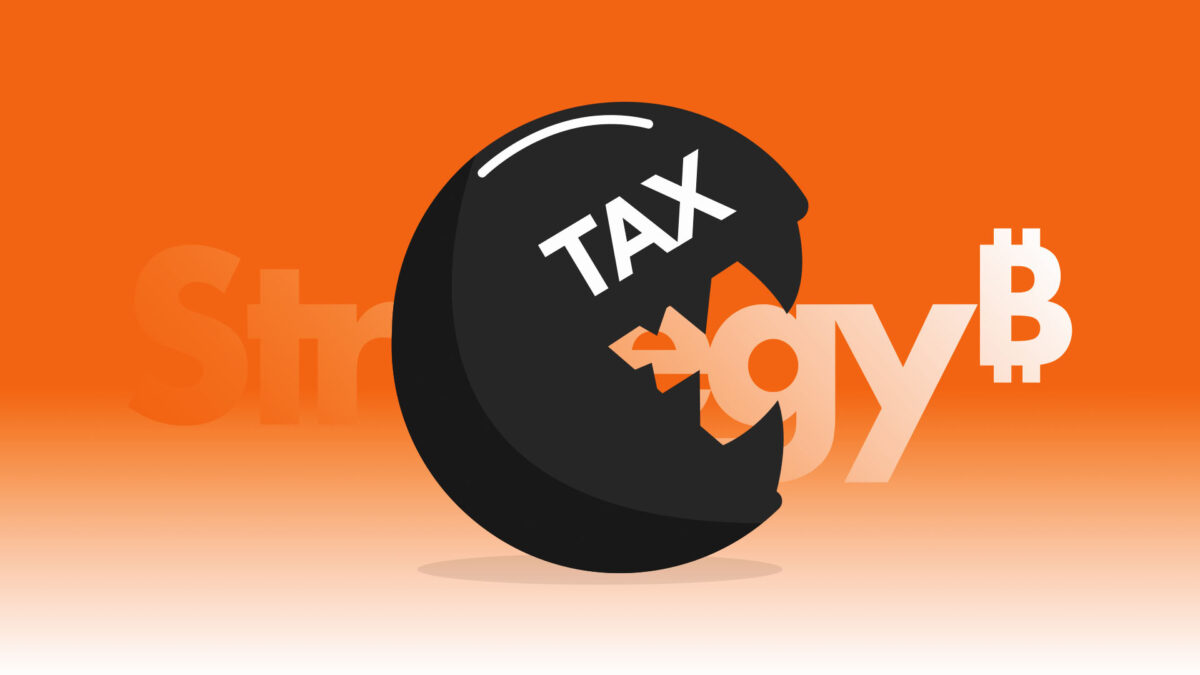The looming tax bill of Strategy preferreds

On several recent TV interviews, Strategy (formerly MicroStrategy) founder Michael Saylor has boasted about the benefits of tax-deferred dividends that it pays to preferred shareholders. Sadly, there is never a free lunch on Wall Street. These Return Of Capital (ROC) dividends are ballooning a tax debt onto preferred investors at an accelerating growth rate.
Tax deferred does not mean tax free. Although Strategy’s peculiar form of ROC dividends do not impose immediate taxes, their mounting obligations increase at an ever-faster rate as future deadlines near.
Strategy advertises generous, “tax equivalent” yields as high as 21.6% for its preferred dividends under the assumption that the company will maintain ROC status. Far from a minor footnote, the company has prominently featured ROC assurances on its most recent quarterly earnings report, dedicating an entire slide and several minutes of its presentation to ROC guidance.
Read more: Strategy needs to pay $689M a year to not sell bitcoin
It forecasts more than 10 years of ROC dividend status – a formidable feat in and of itself. Requiring careful avoidance of positive taxable earnings or profits to legally return capital rather than pay qualified disbursements to shareholders, Strategy must adhere to a lengthy list of prohibited corporate actions.
The company has disclosed the risks and importance of maintaining ROC status in SEC filings. For example, on July 21, it admitted, “To the extent that the amount of a distribution with respect to the Preferred Stock exceeds our current and accumulated earnings and profits, the distribution will be treated first as a tax-free return of capital to the extent of the holder’s adjusted tax basis in the Preferred Stock.”
In other words, the company must keep its earnings and profits low enough to pay out ROC dividends.
ROC dividends delay, not reduce, tax
Even assuming Strategy can maintain ROC status for dividends, tax authorities like the IRS will still collect on those Return Of Capital dividends eventually.
As the saying goes, it is impossible to be certain of anything but death and taxes.
Specifically, ROC dividends reduce investors’ tax basis. Rather than receiving cash as a qualified dividend disbursement, ROC dividends simply reduce the basis at which a taxpayer calculates their cost basis when reporting their profit and loss at the time of sale.
For example, Strategy intends to pay $10 worth of ROC dividends annually to every STRD and STRF shareholder, i.e. a 10% annual dividend rate on their $100 Stated Amounts. (Strategy’s two other preferred shares, STRK and STRC, pay 8% and a variable 10.5% rate, respectively.)
However, shareholders do not actually receive $10 as cash in their brokerage account per share of STRD or STRF. Instead, Strategy issues a non-taxable, Return Of Capital to shareholders of record as of dividend snapshot dates.
This reduces the tax basis, translating – by the company’s own admission – “into increased taxation for the holder once the holder’s tax basis is entirely depleted or the holder sells the shares.”
Strategy preferreds can’t delay taxes forever
A $10 ROC dividend on a $100 stated amount is a 10% tax basis reduction in the first year, reducing the cost basis to $90, yet the second year’s $10 dividend on a $90 basis becomes an 11% tax basis reduction as it reduces the cost basis to $80, and so forth.
Each successive year becomes more tax-deferred, increasing the tax burden for the final year at an ever-higher rate.
Eventually, the tax basis of an investment could become depleted entirely – such as after ten years of $10 worth of annual basis reduction on STRD or STRF, making all subsequent dividends fully taxable no matter Strategy’s ROC status.
This total basis depletion also makes the full Stated Amount worth of dividends (i.e. $100 for most preferreds) immediately taxable whenever the shareholder sells.
The tax will eventually come due.
Got a tip? Send us an email securely via Protos Leaks. For more informed news, follow us on X, Bluesky, and Google News, or subscribe to our YouTube channel.
